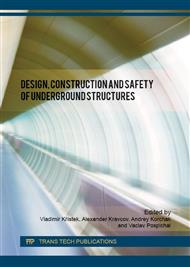p.65
p.72
p.81
p.87
p.93
p.103
p.111
p.118
p.125
Protective Structure Design against Airblast Effect
Abstract:
In the Army of the Czech Republic, the protective structure design is currently regulated by a military standard Žen 2-1/1, mainly for buried structures and against nuclear loads. As the nature of current armed conflicts suggests, it would be more appropriate to design above-ground protective structures exposed to the effects of direct or indirect fire weapons. The paper describes a search for an ideal above-ground structural shape exposed to an airblast. Several shapes were designed and their behavior under a typical airblast loading was tested using ANSYS software. As a result of the analysis, the most suitable shape of a protection structure was designed.
Info:
Periodical:
Pages:
93-102
Citation:
Online since:
July 2016
Authors:
Keywords:
Price:
Сopyright:
© 2016 Trans Tech Publications Ltd. All Rights Reserved
Share:
Citation:


